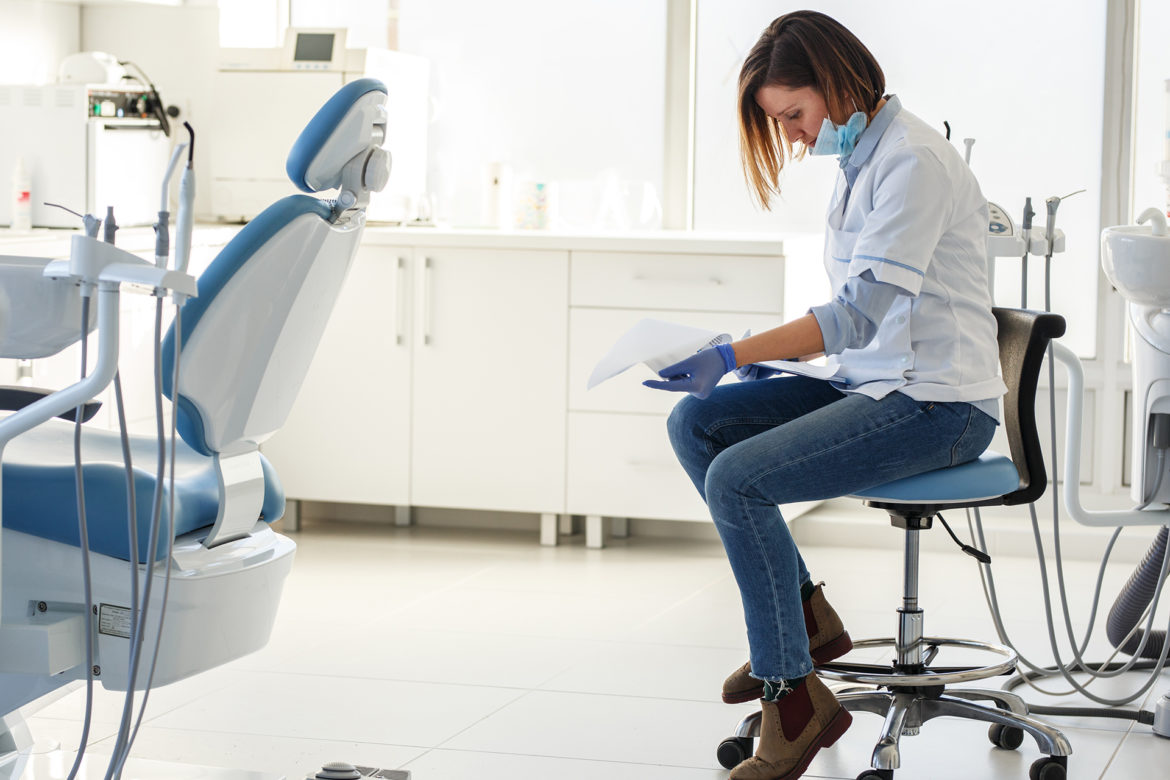“An abundance of caution…” That phrase might seem momentarily overused but it certainly applies to the return-to-work guidelines for dental practices during the COVID-19 era.
Caution or purely risk management – it’s vital during the COVID-19 pandemic and beyond to carefully follow necessary recommendations.
Return-to-work guidelines for dental practices and how you can expect to adjust to dentistry beyond sole emergency care
You’ve perhaps been treating patients as an emergent care need arises during the COVID-19 lockdown period. This has required you to safeguard your patients, your team, and yourself for those procedures.
That same cautionary and protective mindset will of course continue as you apply the broader return-to-work guidelines for dental practices as outlined by the ADA (American Dental Association) in cooperation with the CDC (Centers for Disease Control).
”It is recognized that different areas will return to a more familiar style of practice at different times, and under different circumstances. Each dentist will need to incorporate their clinical judgment with their knowledge of the incidences of COVID-19 cases in their area, the needs of their patients, and the availability of any necessary supplies to re-engage in the provision of elective dental care.”
The ADA also recognizes that as knowledge about COVID-19 evolves more recommendations will be necessary that could impact how you practice dentistry going forward.
It’s important that you feel a strong sense of advocacy and support from the ADA and their appointed or affiliated task forces.
Return-to-work guidelines for dental practices and your patient appointments
Patients will require loads of reassurance as lockdown restrictions are lifted and you re-open your dental practice for routine dentistry. There are key areas to focus on and provide clear patient communication about.
INFECTION CONTROL
As you know, infection control is a routine requirement for your dental operations. But it’s now more front-of-
for your patients because of COVID-19.mind
A simple, brief communication (a letter or email) delivered to your patients could help with their related anxiety.
- Reassure them about your standard of care commitment to maintaining infection control
- Inform them about any specific protocols you’ve been following during the pandemic for emergency care and what you’re doing prior to reopening your practice
- Cover the full scope of cautionary actions you’re taking such as pre-screening, personal and professional sanitizing procedures, social distancing support, waiting area/receptions changes, etc.
PRE-APPOINTMENT SCREENING
The advanced screening of your patients is intended for their safety, the safety of your other appointed patients, your team, and you. It’s recommended that you adapt your scripted questions to be as conversational and non-threatening as possible – while maintaining a sense of urgency for the process.
Pre-appointment communication and questions are designed to collect necessary information prior to their office visit.
- Explain that the purpose of your contact/call is to remind them about their appointment and to gather necessary health information before they arrive.
- Ask pre-screening questions about specific health issues such as fever, shortness of breath, cough, flu-like symptoms, contact with COVID-19 positive patients, travel (within past 14 days), etc.
- Inform them that these questions will be repeated on-site and their temperature will be taken upon arrival at your office.
- Remind them to limit…

